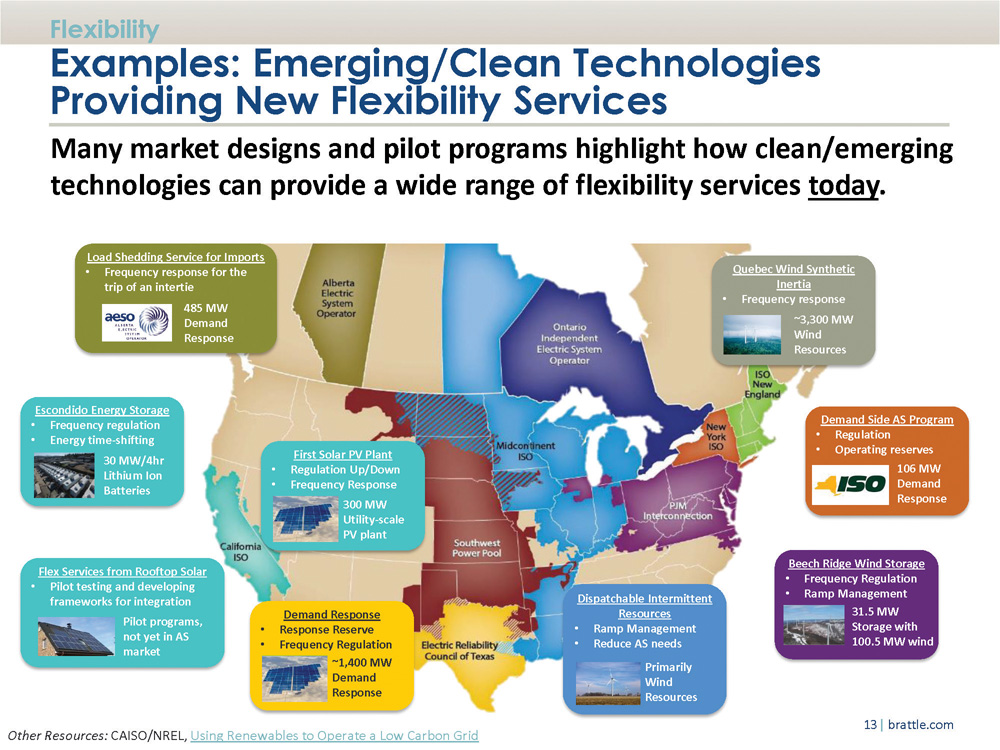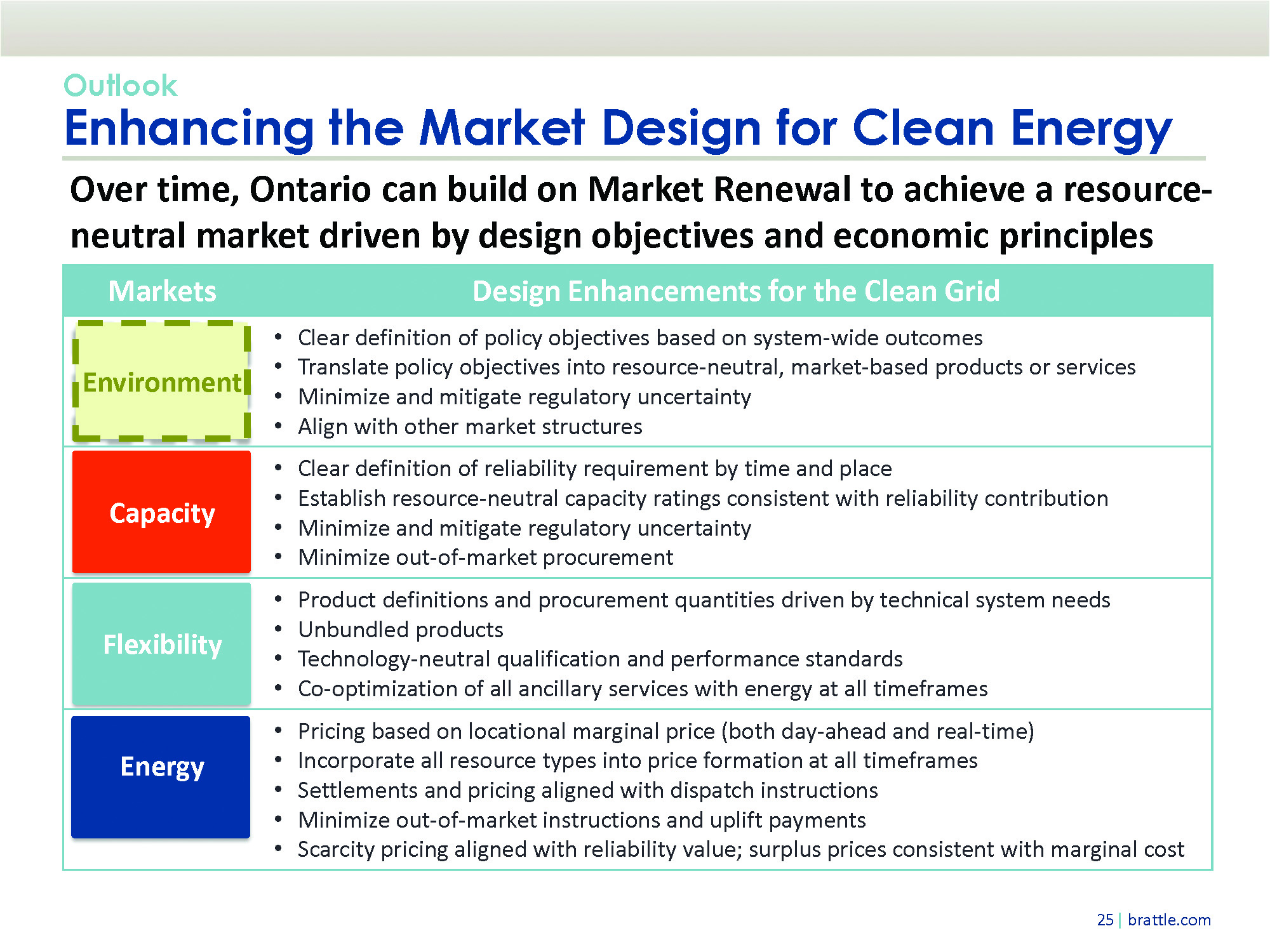As part of the consultation process on the redesign of Ontario’s electricity market, Ontario power suppliers are being advised to identify the full range of potential participation barriers they see to market participation in the near future.
“Considering that the fundamentals of Ontario’s Market Renewal process are being developed in the next few months, it’s significant that the current process for non-emitting resources is largely focused on how to ensure the broadest possible participation from suppliers in the market of the future,” said Stephen Somerville, APPrO Director and Vice President of Development and Acquisitions with H2O Power. The IESO has set up a subcommittee on non-emitting resources, reporting to the primary Market Renewal Working Group, both of which are conducting broad stakeholder engagement processes in preparation for significant market redesign work ahead.
Speaking to the January 22 meeting of the Subcommittee, Kathleen Spees, Principal at The Brattle Group, outlined some of the primary considerations likely to drive the upcoming discussions. She stressed that in her view, the twin objectives of clearly defining the services needed by the grid, and accurately determining the value of those services when and where they are delivered, will remain central to the efficiency and effectiveness of Ontario’s electricity market.
 Numerous methods are already in use for remunerating ancillary services on a market basis
Dr. Spees took pains to dispel what she believes is a common misconception. Electricity markets around the world appear to be facing challenges as large volumes of new renewable energy with low marginal costs depress retail prices and cut deeply into the returns expected by generators. However this is not a failure of the market nor a reason to move away from market pricing, Dr. Spees argued. On the contrary, taken together with the rising need for ancillary services, it is an indication that current market designs are evolving toward more fully defining and pricing the full range of services the system operators need to run their systems reliably and efficiently. Markets in the future may be organized to secure at least four types of services competitively: Energy, capacity, flexibility and carbon abatement. In addition, some market participants can supplement their business case by adding services that provide value directly to customers, to distribution companies, or by providing transmission-related services.
Numerous methods are already in use for remunerating ancillary services on a market basis
Dr. Spees took pains to dispel what she believes is a common misconception. Electricity markets around the world appear to be facing challenges as large volumes of new renewable energy with low marginal costs depress retail prices and cut deeply into the returns expected by generators. However this is not a failure of the market nor a reason to move away from market pricing, Dr. Spees argued. On the contrary, taken together with the rising need for ancillary services, it is an indication that current market designs are evolving toward more fully defining and pricing the full range of services the system operators need to run their systems reliably and efficiently. Markets in the future may be organized to secure at least four types of services competitively: Energy, capacity, flexibility and carbon abatement. In addition, some market participants can supplement their business case by adding services that provide value directly to customers, to distribution companies, or by providing transmission-related services.
 Design enhancements for a Clean Grid
Establishment of a full suite of competitive markets can be expected to more appropriately reward entire categories of power suppliers who are finding it difficult to compete today, Dr. Spees suggested. This would preserve the integrity of existing market mechanisms while setting up conditions for further competitive discipline in the more extensive and complicated markets of the future. “We could see enhanced competition because more resource types will be competing on a wider range of products and services,” Spees said, referring to energy, capacity, flexibility, and carbon abatement as distinct market services. This view is in line with central objectives for the process expressed by the IESO: improving market efficiency and broadening the range of participants active in the market. “Carbon abatement” in this context refers both to the existing cap-and-trade market, as well as to potential future “commercial mechanisms” that could be introduced and will be considered in Phase III of the Non-Emitting Resource subcommittee.
Design enhancements for a Clean Grid
Establishment of a full suite of competitive markets can be expected to more appropriately reward entire categories of power suppliers who are finding it difficult to compete today, Dr. Spees suggested. This would preserve the integrity of existing market mechanisms while setting up conditions for further competitive discipline in the more extensive and complicated markets of the future. “We could see enhanced competition because more resource types will be competing on a wider range of products and services,” Spees said, referring to energy, capacity, flexibility, and carbon abatement as distinct market services. This view is in line with central objectives for the process expressed by the IESO: improving market efficiency and broadening the range of participants active in the market. “Carbon abatement” in this context refers both to the existing cap-and-trade market, as well as to potential future “commercial mechanisms” that could be introduced and will be considered in Phase III of the Non-Emitting Resource subcommittee.
Dr. Spees went further, saying that fully functional price signals are particularly important during times of uncertainty: “The more uncertainty you have in the system, the more critical it is to have an accurate and strong price signal to tell people when and where to inject power into the system.” A key part of the IESO’s anticipated solutions for redesigning the market is to more accurately reflect the value of electricity services at a specific time and a specific location. “You want to pay people precisely what their service is worth at the specific time and place,” Spees said. She suggested that short bursts of scarcity pricing may be entirely healthy. “Those really strong price signals should come into play. The system needs to make sure the value of that need is reflected in energy prices.”
Addressing the question of why updated market designs should consider entrenching carbon abatement as a core element, Spees explained that it’s largely a matter of meeting well-defined policy objectives and managing regulatory risk. If future governments are likely to impose carbon restrictions on the electricity sector beyond what would be achieved by cap-and-trade alone, it’s far better to build in methods to optimize for a given carbon abatement or clean energy objective than to proceed without such a mechanism, and be forced to retroactively reduce emissions in a non-market fashion.
Dr. Spees stressed that the active involvement of market participants will be critical to achieving satisfactory results in the upcoming Market Renewal process. For markets to operate effectively in the more complex circumstances that appear to be emerging, the IESO needs to clearly define the kind of services it needs, and to do so in a way that consciously considers the needs and abilities of suppliers and other market participants. Benefits can be enhanced if suppliers provide concrete information to the IESO that it can use in the immediate future to better define the types of services it will need to procure in the medium and long term. She provided a checklist that market participants can use to focus their thinking on barriers. The checklist includes the following questions:
• Are products defined based on technical system needs, and sufficiently unbundled to utilize the full capability of this resource type?
• Are eligibility requirements resource-neutral and defined based on technical capabilities?
• Is supply-side participation enabled?
• Do customer rates/structures allow a range of business models to capture wholesale revenues (i.e., customer-owned, utility-owned, aggregated)?
• Does the resource receive a price signal reflective of marginal value to the system at the time and place that the product is delivered?
• Do contracted resources receive operating incentives consistent with market prices?
• Can distributed resources capture wholesale, distribution, and customer value streams?
• Does the IESO have sufficient visibility and control to rely on this technology?
• Do qualification requirements reasonably accommodate different technologies’ capabilities?
• Can the resource participate in price formation?
The IESO explains that the MRWG (Market Renewal Working Group) initiated the Non-emitting Resources Subcommittee “to ensure that Market Renewal addresses the unique characteristics of non-emitting resources and to consider the potential for additional incentive mechanisms to meet low carbon policy objectives.” The focus of the subcommittee is to explore the following three areas for non-emitting resources:
1. Participation: Future integration and barriers to participation for non-emitting resources in the proposed Market Renewal design scope;
2. Market efficiencies: Market impacts associated with higher levels of non-emitting resources with very low to zero marginal costs; and
3. Commercial mechanisms: The potential need for additional incentive mechanisms to value environmental attributes and support net zero / low carbon emission facilities.
The IESO will be issuing a Request for Information (RFI) regarding the role of non-emitting resources in the new electricity marketplace. The RFI will be issued in two phases. The first phase, to be released February, will focus on the technical and operational characteristics of non-emitting resources. Phase two will focus on commercial and regulatory considerations and will be issued toward the end of the summer of 2018.
The next meetings of the Subcommittee are scheduled for February 16, March 22/23, and April 9, 2018.
The IESO and the Brattle Group both appear ready to hear the views of suppliers on whether the system is properly recognizing the value of the services they can provide, and what might be done to alleviate barriers to market participation in the future.
Further information on the Subcommittee can be found on the IESO website at ieso.ca > Sector Participants > Market Renewal > Non-Emitting Resources Subcommittee, or this location:
http://www.ieso.ca/en/sector-participants/market-renewal/non-emitting-resources-subcommittee.
To provide any comments about the work of this subcommittee or any other Market Renewal initiatives, please contact
